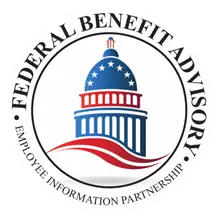Retirement is an exciting time, especially when you have all of the proper details squared away. However, it can also be frightening and full of uncertainty when you don’t know how to manage cash flow during federal retirement.
During the months and years spent planning leading up to your retirement, you may find yourself with questions, such as:
“Will the basic FERS annuity be enough to sustain me for the rest of my life?”
“Am I going to have enough to maintain my standard of living in retirement?”
“What am I supposed to do with my TSP funds?”
“How do I generate more income streams?”
All of these are excellent questions, and we’re glad you’re asking them. This article will help by working to solve any retirement cash flow issues you may be concerned about and sharing the best tips we have for improving your federal employee retirement income.
What Cash Flow Will I Automatically Receive at Retirement?
Before we explain how you can master financial planning and generate additional sources of income under the Federal Employee Retirement System (FERS), it is important to understand what income you will already have once you retire compared to your cash flow needs.
In general, your retirement benefits under FERS are separated into three categories: basic pension benefits, Social Security benefits, and the Thrift Savings Plan (TSP). For FERS retirees, the basic benefit plan is where you’ll see the bulk of your income.
With the basic benefit package, you are privy to a monthly retirement annuity. The amount of this payment (also called your pension) is heavily based on factors from when you were employed, such as how old you were when you retired, what your income was, and your total length of service.
For example, most people can take their full annuity at age 60 with 20 years of service or at age 62 with five years of service. However, specific categories of employees may retire at only age 55 with twenty years of service. Some of these special employees include air traffic controllers, law enforcement officers, and nuclear weapons couriers.
The amount for your FERS annuity is calculated using these factors and your high-3 average salary and determines your yearly payout, which is then broken down into monthly payments. Currently, the average FERS annuity once all is said and done is around $1,834, according to the Federal News Network. Your social security and TSP will supplement this to provide you with a better cash flow during federal retirement.
It is also worth mentioning that, according to the article noted above, Civil Service Retirement System (CSRS) employees generate an average monthly annuity of $4,973; however, most federal government employees are no longer under that system.
How Can my TSP (Thrift Savings Plan) Help?
To put it simply, your Thrift Savings Plan is a government-sanctioned benefits supplement that stores monthly contributions from you while you are employed. This plan is paid into using a combination of your own money and matching agency contributions from your employer.
TSP has 15 funds with varying levels of risk from low to high risk, with potential earnings that range the same way. You may divide your TSP assets by choosing among the various funds which best fit your risk/reward tolerance within your account.
With your TSP, your years of service make a huge difference. Depending on whether you have 20 years of service, 30 years of service, or something even higher, your TSP funds can grow exponentially, as they continue to receive contributions as long as you are employed.
While it is true, though, that a TSP can drastically improve your cash flow during federal retirement, many federal retirees aren’t sure what to do with it once they retire.
What Do I Do with my TSP Once I Retire?
Your TSP is an important resource during retirement helpful in planning retirement, but only if you know how to properly use it.
At age 591/2 or at retirement, you have a choice to keep your funds with TSP or transfer to a qualified retirement account.
Most often, we recommend converting your TSP account into a regular life time guaranteed income annuity to increase cash flows during retirement. There are a few reasons we suggest this
The first of these is the simple fact of income tax deferral. Any funds that go into your TSP are tax-deferred, which means the money contributed to it isn’t taxed until it is withdrawn. So, no matter what, you will have to pay taxes on these funds as you receive them.
In short, if you withdraw all of your TSP funds at once, you have to pay taxes on them. This can be a significant pain, especially if you have a large amount of money stored in your TSP. However, a transfer to a qualified retirement account such as an IRA is a non-taxable event
You may convert your TSP account to an IRA income annuity and pay taxes as you receive your income, regardless of your tax rates.
Additionally, by converting your TSP to an Income annuity, you can structure your paycheck to provide sufficient cash flow in retirement.
Is It Ever Appropriate to Withdraw from My TSP in a Lump Sum?
As with anything, there are always particular circumstances where it may benefit you more to withdraw from your TSP instead of receiving an annuity.
Some of these situations may include the need to pay off your house, car, or other forms of debt, having outstanding medical bills, or the need to pay someone in advance for long-term care.
Regardless of your circumstances, though, we recommend you avoid lump sum TSP withdrawal if at all possible, as it will create a taxable event, to include federal, state and county income tax withholding where appropriate.
How Do I Transfer My TSP To A Guaranteed Monthly Paycheck?
When transferring your TSP to an annuity, we recommend speaking to a Federal Employee Benefit Planner (FEBP) for help.
The benefits of speaking with a Federal Employee Benefit Planner is that the FEBP is uniquely qualified to understand federal retirement options and advise you regarding alternative retirement solutions. The FEBP can illustrate multiple income choices for retirement.
We are here to help you retire comfortably and securely, so contact us today!


